21 Nov 2025
The recent Summer Undergraduate Research Fellowships (SURF) poster fair and awards celebrated Xi’an Jiaotong-Liverpool University’s 2025 SURF programme, which hit record numbers for both participants and projects. The annual SURF programme provides funding and support to enable undergraduates to conduct research with academics. About 2,600 students worked on 615 projects from diverse disciplines this year, up from 1,800 students and 399 projects the previous year.
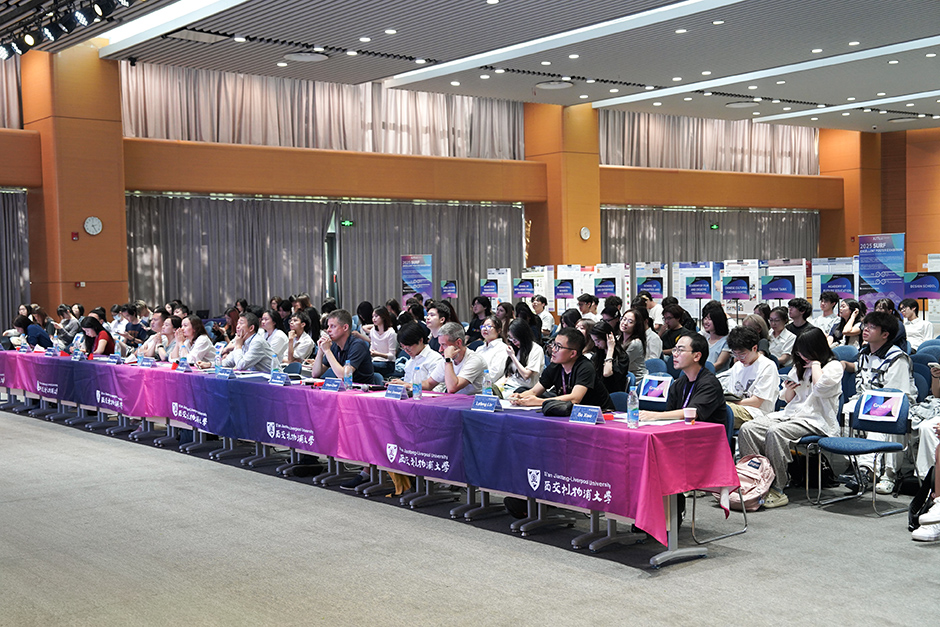
2025 SURF awards ceremony
Professor Zhoulin Ruan, Vice President of Academic Affairs, says SURF is a signature programme for XJTLU.
“SURF has been running for over 10 years, and has become a valuable learning experience for students, as well as an effective way for the University to further enhance its position as a research-led institution,” he says.

Professor Zhoulin Ruan
Three projects offer a glimpse into how SURF achieves this.
Getting the ball rolling
If you want to elevate your billiards game, a 2025 SURF project offshoot might one day help you. A SURF team developed a proof-of-concept for an immersive virtual reality (VR) training platform for billiards. The application guides users in selecting shots and controlling angles and strength, and provides personalised training programmes.
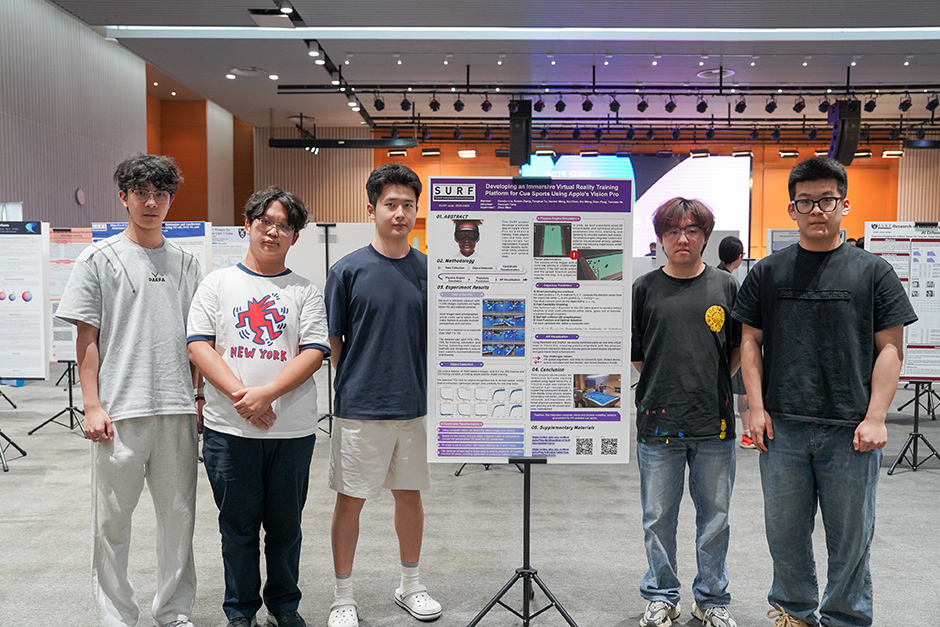
Members of the VR training platform project team, from left: Haoran Wang, Haoyuan Yang, Rui Wang, Fenghua Yu, and Shen Peng (other members not shown)
Dr Mian Zhou, Senior Associate Professor at the School of AI and Advanced Computing, XJTLU Entrepreneur College (Taicang), supervised the SURF project, “Developing an Immersive Virtual Reality Training Platform for Cue Sports Using Apple’s Vision Pro”.
The team used Apple’s Vision Pro mixed-reality headset to capture the positions and motion trajectories of billiard balls in play. Because no existing dataset matched the billiards tables at XJTLU, the students used the headset to take over 1,000 images to achieve the required recognition accuracy.
They also used AI algorithms and 3D modelling to build the platform’s functionality and intelligence.

Working with the VR training platform for billiards
Creating a computer model to reflect the movements and paths of billiard balls was a challenge, team members say. They had to accurately translate real-world physical coordinates to the virtual billiards table. Results from AI tools were off track. Finally, team member Rui Wang found fragmented code in a technical forum that the team pieced together into a workable solution.
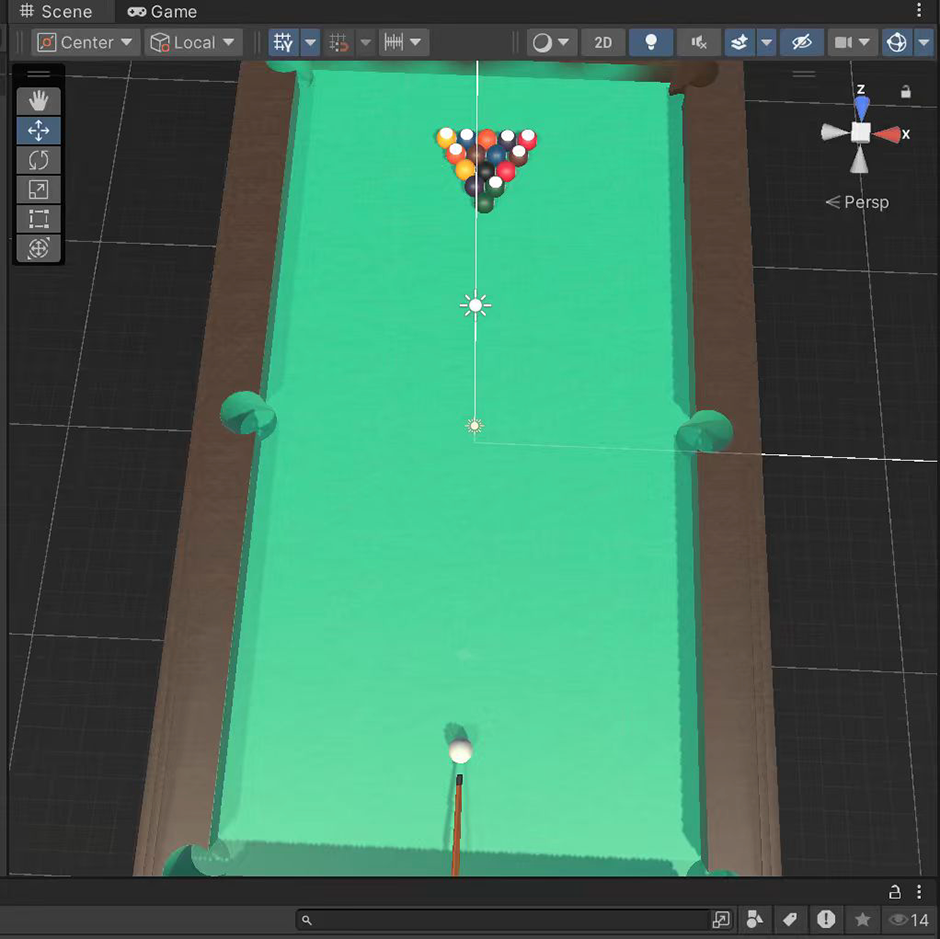
Virtual billboard table. Photo courtesy of Unity
A tech company founded by XJTLU alumni plans to help the team advance commercialisation of the work.
“Moving forward, we will continue to refine the core technology while working with our partner company to explore innovative business models,” Dr Zhou says.
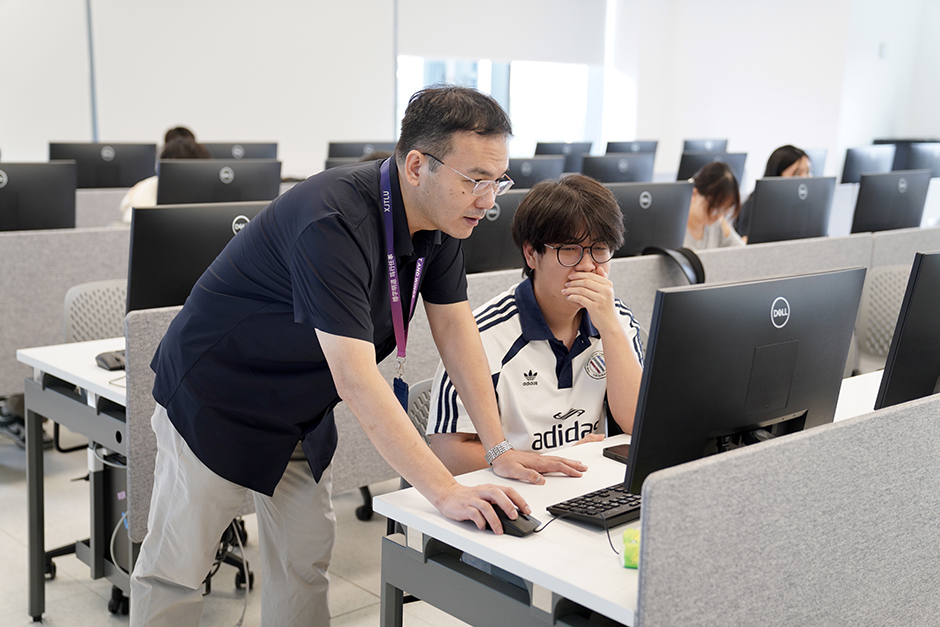
Dr Mian Zhou mentors students
Picturing cities
Images of Chinese cities on the popular Chinese social media platform Rednote (Xiaohongshu) tend to make the cities look more alike than they are, according to research from another student team. The SURF project, supervised by Biwei Cong from the Academy of Film and Creative Technology, examined contemporary urban photography in China as it appears on social media.
“When we look at travel guides on Rednote, we often come across highly similar photos and popular ‘check-in spots’,” says team member Shuyi Li. “We wanted to explore how social media reshapes people’s imagination of cities.”
The team behind “Rednotable? The City Image of China in the Age of Digital Reproduction” analysed more than 1,000 photos on Rednote of 10 major cities. They observed patterns about how the images look and the broader stories they might tell.
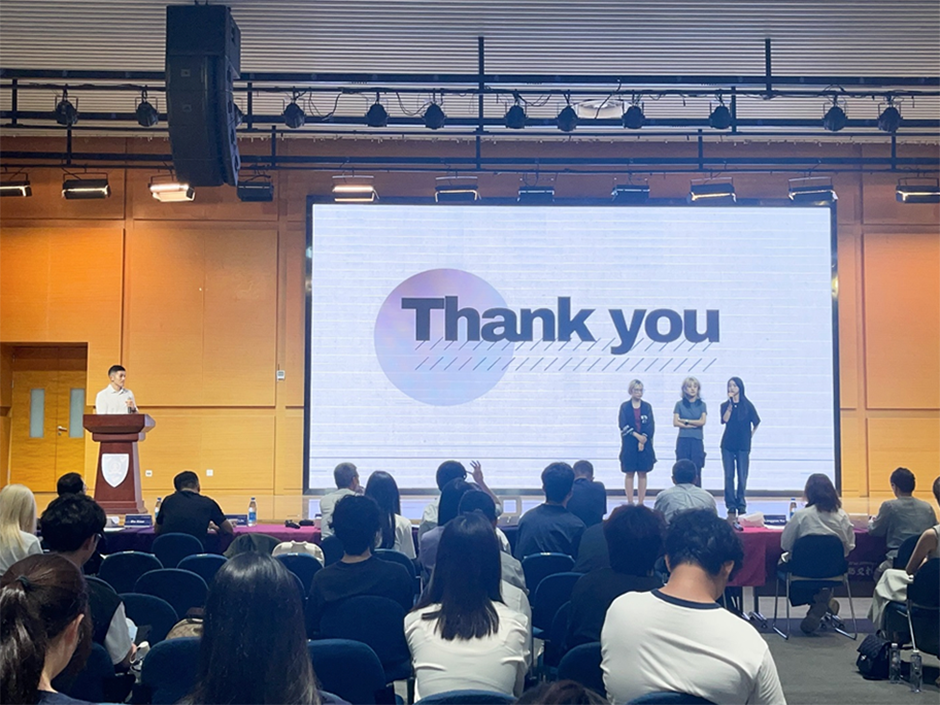
Members of the team who studied city imagery published on Rednote
The study found that the photographers repeatedly use specific compositions, angles, and colours, creating photos that fit patterns and that Rednote users like to share. The team identified eight recurring visual patterns. For example, in the “surreal city” pattern, colour grading and post-editing make the urban photos look otherworldly and futuristic.
“These images are highly appealing yet remarkably similar,” Li says. “Without the texts, it’s almost impossible to tell which city they depict. This reflects a growing trend of visual homogenisation in the age of social media.”
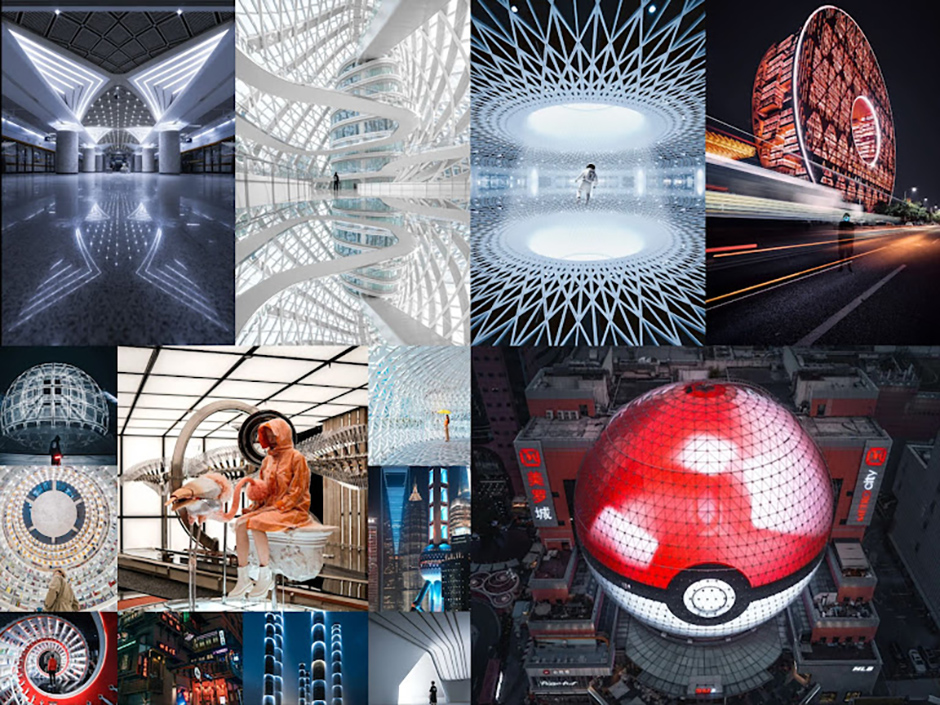
Images of cities in China
Li says she used to think research was distant and abstract, “but through the SURF project I’ve realised it’s actually a systematic and logical way of exploring everyday phenomena.”
From 2D to 3D
A cross-disciplinary SURF team from the BSc Applied Mathematics and BEng Data Science and Big Data Technology with Contemporary Entrepreneurialism programmes explored a technique to create 3D models from 2D images. Professor Fei Ma from the School of Mathematics and Physics supervised the project, “3D Construction Based on 3D Gaussian Splatting and 2D Ultrasound Images”.
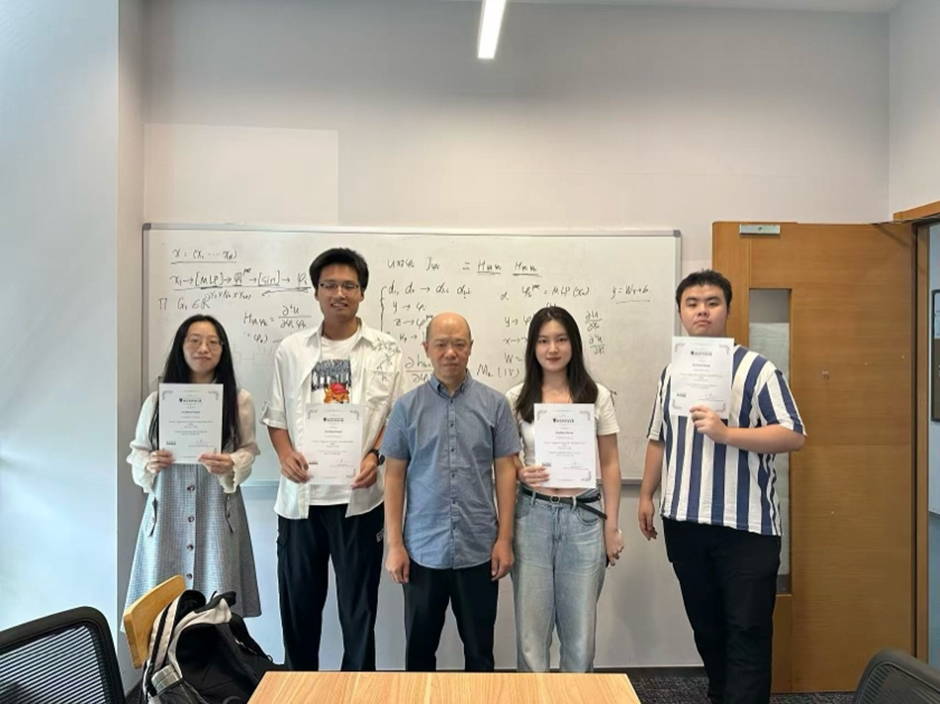
Members of the team creating 3D models from 2D images, from left: Jia Wu, Yangguang Shi, Professor Fei Ma, Haonan Zhang, Yicheng Li (other members not shown)
Haonan Zhang, a student in the Applied Mathematics programme, says that 3D Gaussian Splatting is a new way to help computers build and display 3D images rapidly from sparse data points.
From multiple 2D images taken from different angles, the computer builds a rough 3D shape made of points. At each point, the computer then makes a “Gaussian splat,” like a soft 3D blob with colour, transparency, and orientation. These blobs overlap and blend, and the computer optimises them to create realistic light and surfaces. Finally, it combines them into a rendered image that can be displayed on a screen.

Initial 3D shape made of points generated from ultrasound images of a human arm

Thousands of rounds of processing create realistic 3D images
After ultrasound images of a human arm proved too complex, the students switched to learning the technique using images of objects with cleaner lines, like backpacks and suitcases. This subject matter worked. After thousands of rounds of algorithmic optimisation and additions, the Gaussian splats became increasingly dense and structured. The final rendered 3D models closely resembled the real objects.

Professor Shugong Xu, Associate Vice President for Research and Impact (right), presents the Outstanding Project – First Prize
By Jiayan Ji, Qinru Liu, and Wenzhen Li
Edited by Qiuchen Hu and Tamara Kaup
Photography by Jingrui Duan
Other images courtesy of Rui Wang, Haonan Zhang, and Shuyi Li
21 Nov 2025
RELATED NEWS
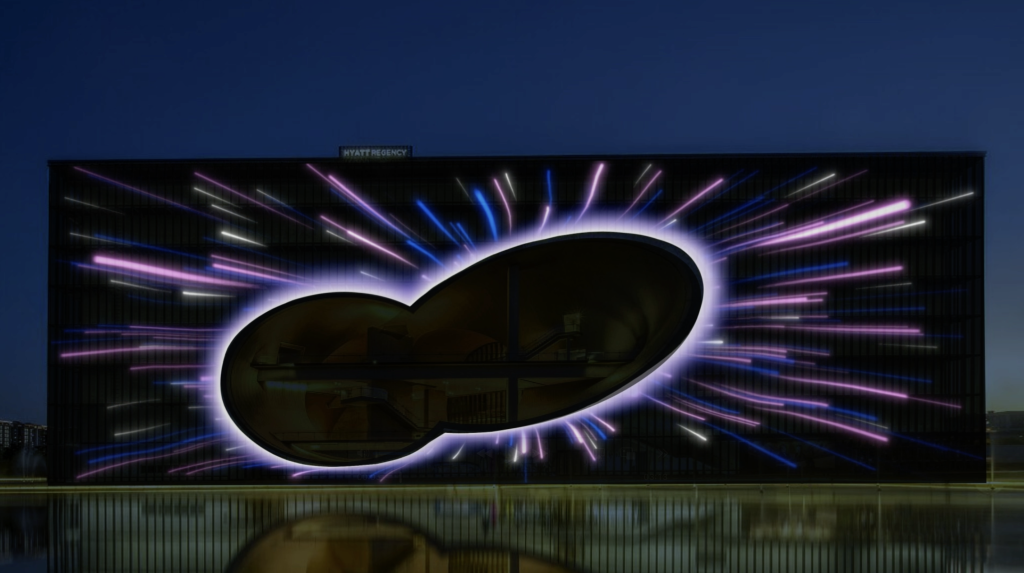
Students shine bright at Shanghai International Light Festival
A student team from the Digital Media Arts programme of the Academy of Film and Creative Technology (AFCT) at Xi’an Jiaotong-Liverpool University has been sh...
Learn more
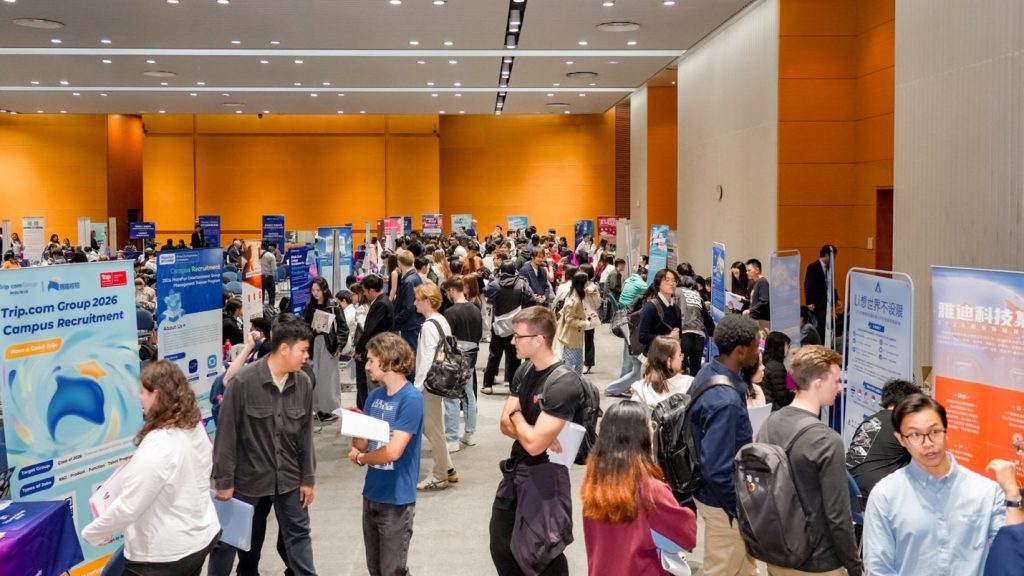
International students linked with potential jobs, internships
A job fair on 5 November at Xi’an Jiaotong-Liverpool University (XJTLU) connected international students in Suzhou with internship prospects and more than 80...
Learn more
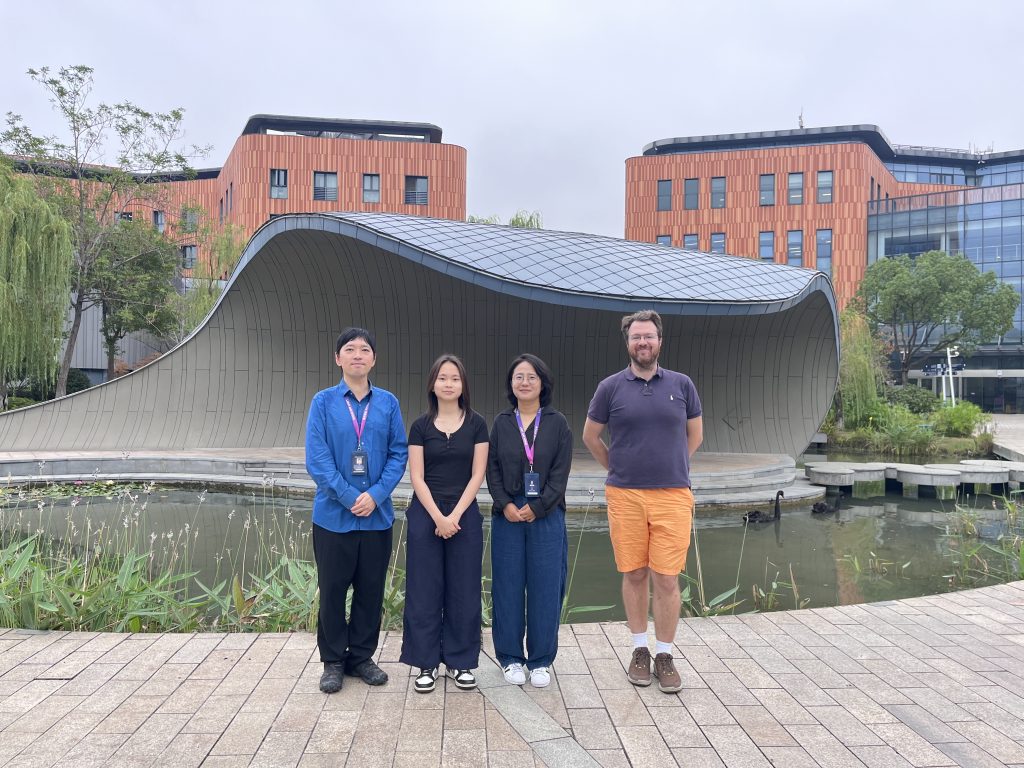
Built with AI: educational projects on contest’s shortlists
Two educational projects from Xi’an Jiaotong-Liverpool University (XJTLU) that use AI have advanced to the second round in the QS Reimagine Education Awards,...
Learn more







